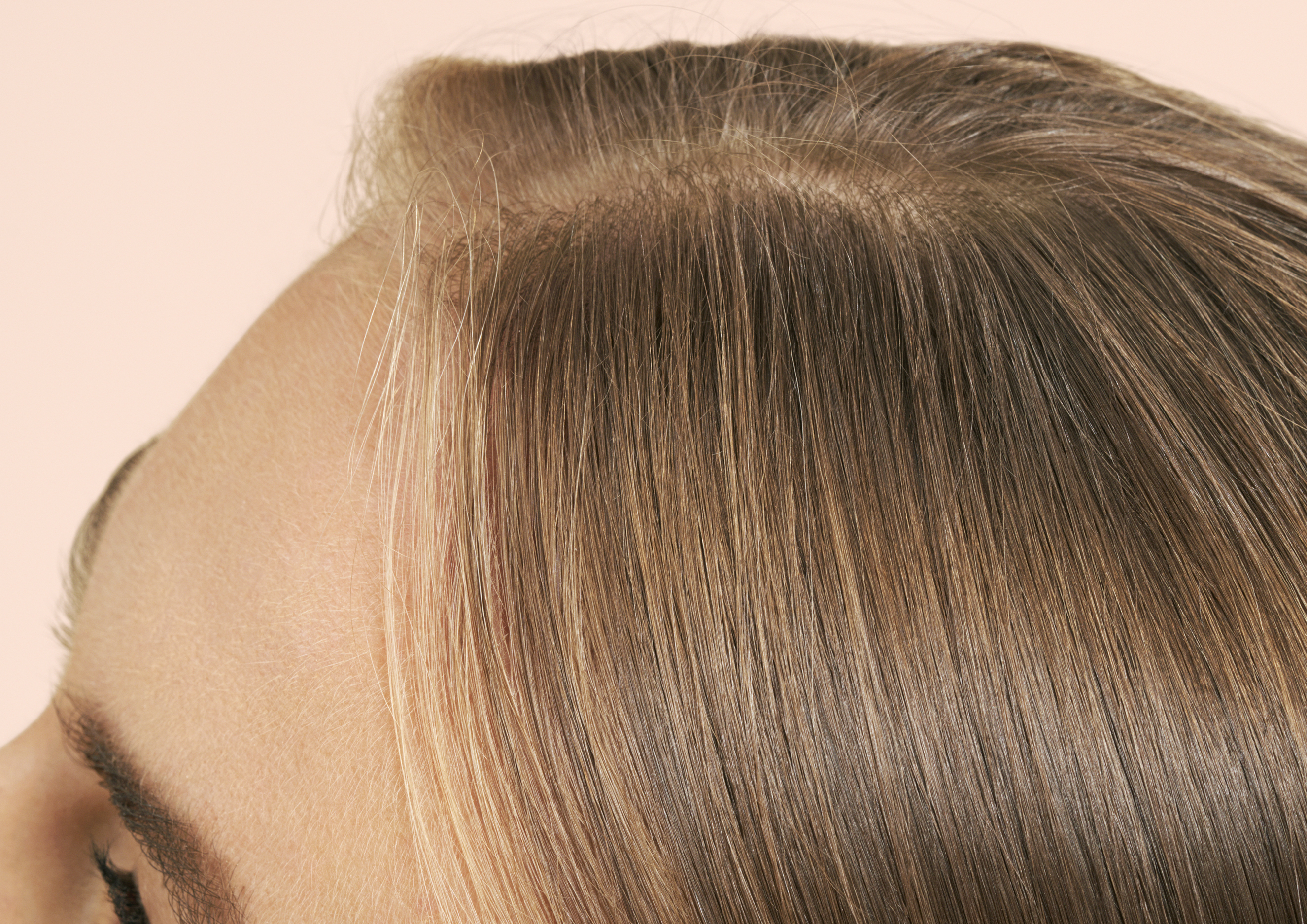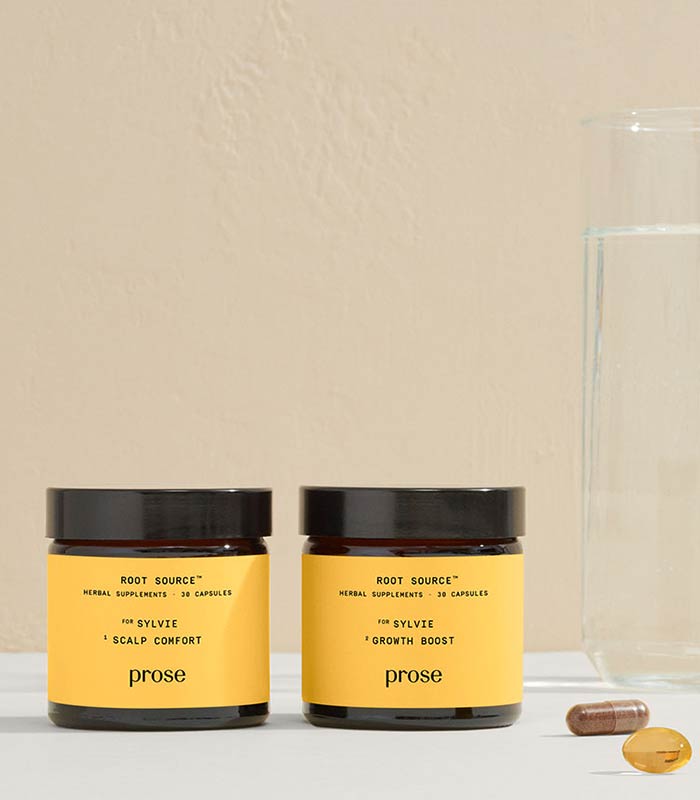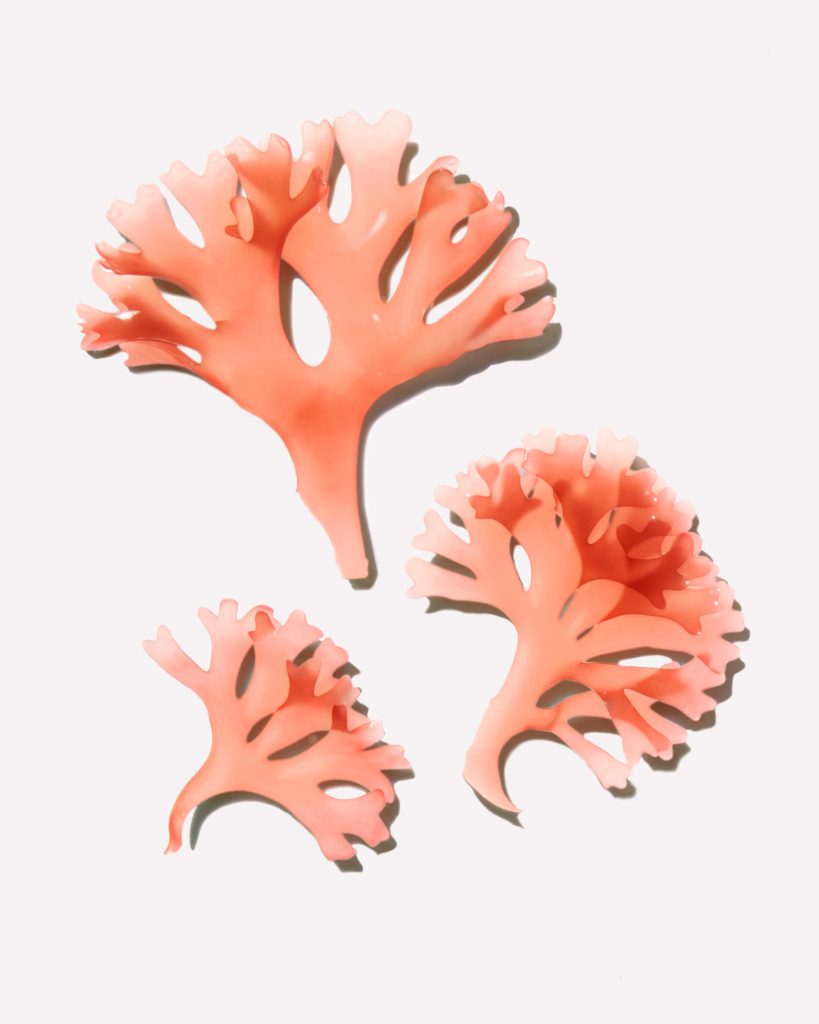This kind of hair loss is called telogen effluvia (TE)
While it’s common to see after pregnancy, it can also happen after any major stress or trauma to the body. This may include surgery, injury, personal trauma, like the loss of a loved one, or even chronic, prolonged stress. All of those examples (like pregnancy) are taxing your body’s resources, and because hair isn’t a necessary organ to keep you going, it gets short shrift.
How TE occurs
There are two stages of hair growth. The first is the growth, or active anagen, phase, and the second is the shedding, or telogen, stage. The two are usually balanced. But, when the body undergoes major stress, a disproportionate number of strands enter the telogen phase, and the scalp rapidly sheds a lot of hair.
Hair loss associated with TE is typically pretty diffused around the head, though it may be more obvious in areas where the hair was sparser to start. The good news about TE is that it’s usually temporary, assuming the initial cause (pregnancy, stress) has ceased or is being resolved—and the anagen/telogen phases should rebalance in six months to a year. What can happen though—and did happen in my case—is TE may reveal the existence of yet another cause of chronic hair loss. For me, the second culprit was my genes.
I had my son in my early thirties, which is younger than female pattern hair loss (FPHL a.k.a. androgenetic alopecia) is commonly seen. But the dramatic shedding I got postpartum did expose the early stages of this hereditary condition (e.g. thinning along my hairline, especially at my temples). For some women, FPHL looks like a Christmas tree, with loss that begins along the forehead, temple to temple, and snakes back through the top of the head/part. Many describe it as a “widening part.” Why it happens: Some of us inherit a sensitivity to male hormones like testosterone, and when receptors on the scalp encounter this hormone, hair fall-out ensues. It usually becomes more apparent as we enter perimenopause when female hormones start to decrease, and male hormones gain an advantage. And while it’s hard to say I feel “lucky” I discovered that I had not one, but two causes of hair loss, it did enable me to start treatment earlier than I might have otherwise—and it prepared me to do battle when I entered perimenopause. Also, most dermatologists agree that the earlier you can start treatment for hair loss, the better the result.
So, what treatments work?
Even though I had two different causes for my hair loss—TE and FPHL—the treatment options are really the same, as the universal goal is to create an optimal environment for any hair growth. While there is not one magic treatment, there are ample options, and most doctors recommend combining modalities because what works for one woman may or may not work for another. In my case, I currently use a cocktail of a minoxidil-based serum, plus a botanical circulation-boosting tonic on my scalp. And I take supplements to help boost the nutrient content in my body so that even when stress may be causing a nutrient imbalance in my body, my hair is not totally robbed of nourishment.
These may not, however, be the right options for you. It’s important to note that any extreme hair loss should be evaluated by your doctor—and a treatment regimen should be created with that doctor’s help. While TE and FPHL are common causes of hair loss (and the below recommendations are frequently recommended by doctors), there are cases where shedding is indicative of a systemic condition, such as thyroid disease, anemia, an auto-immune disease or estrogen depletion, which would require other doctor-directed treatments.
Scalp stimulation
Minoxidil is a popular topical ingredient for any kind of hair loss. How it works is up for debate, though most doctors agree that it promotes blood flow to the scalp, ensuring hair follicles are well nourished. There is also some evidence that minoxidil increases an enzyme (called ATP) inside the hair follicle, extending the growth phase and keeping hair on the head longer. For those who prefer a more natural approach, there are also botanical scalp treatments that work similarly, encouraging blood flow to hair follicles with the intent of creating healthier, more robust future growth.
Supplements
An imbalanced diet or mild vitamin deficiency can exacerbate stress-related hair loss by depriving hair follicles already lacking in nutrients. So, taking a supplement (a multivitamin or a supplement that specifically targets hair loss) may help fill in nutritional gaps.
LED red-light therapy
There is some evidence that exposing the scalp to red LED light may increase blood flow (so hair follicles get more nourishment) and decrease the male hormone that causes hair loss in FPHL cases. There are several (albeit pricey) at-home LED devices that are FDA-cleared for treating hair loss.
Lasers
Preliminary research suggests fractional lasers may extend the growth phase of the hair, helping hair stay on the scalp longer and slow shedding.
PRP
Doctors use PRP (platelet-rich plasma) injections to stimulate regrowth. The process: Your doctor draws a sample of your blood, places it in a centrifuge and spins it to separate the growth-hormone-rich platelets. These platelets are then injected into the scalp, and the growth hormones they release help boost hair-follicle productivity.
So, if thinning hair runs in your family, or is the result of a certain life stressor, know that there are numerous options you can utilize to help you grow back thick, healthy hair.
*These statements have not been evaluated by the Food and Drug Administration. This product is not intended to diagnose, treat, cure or prevent any disease.






